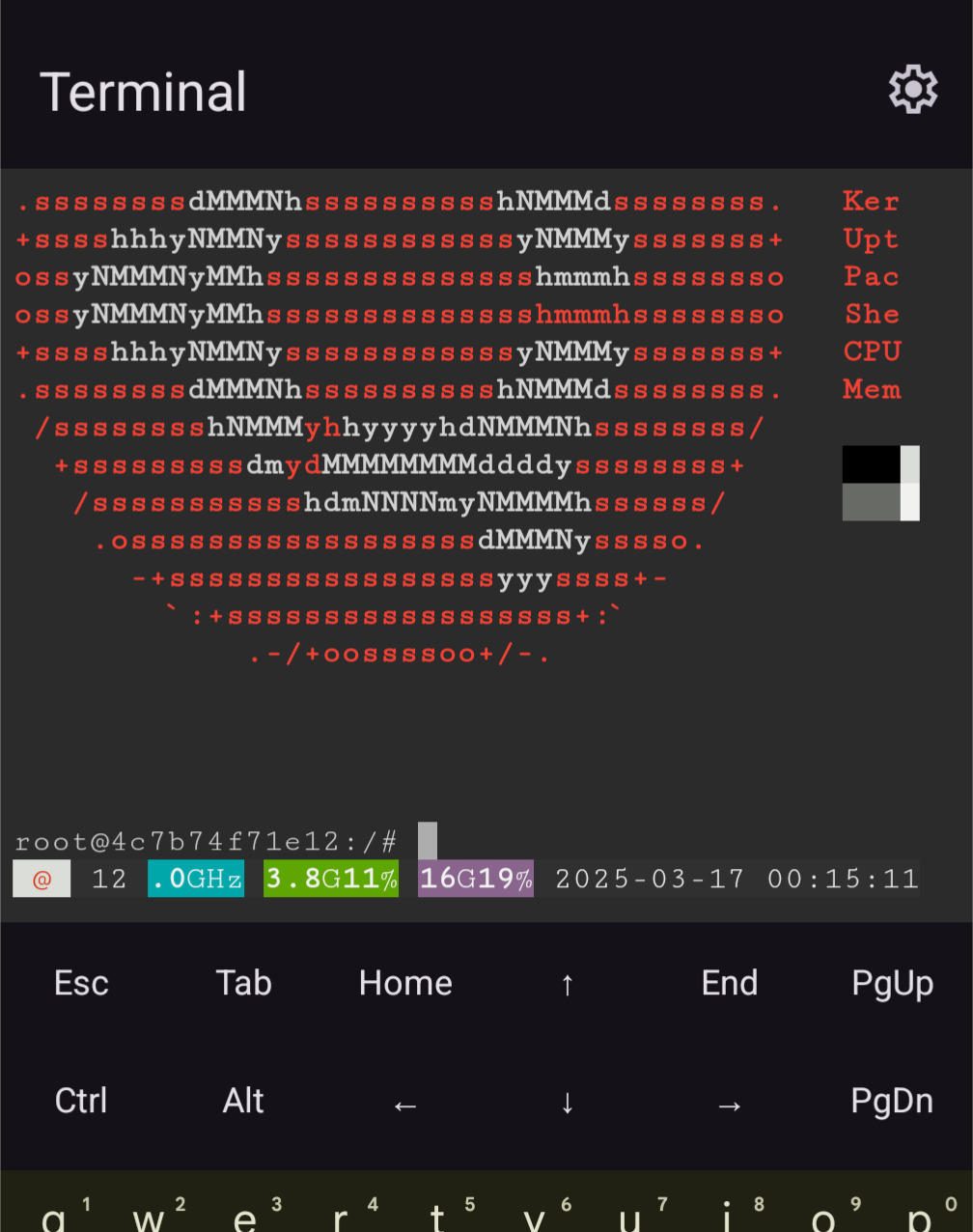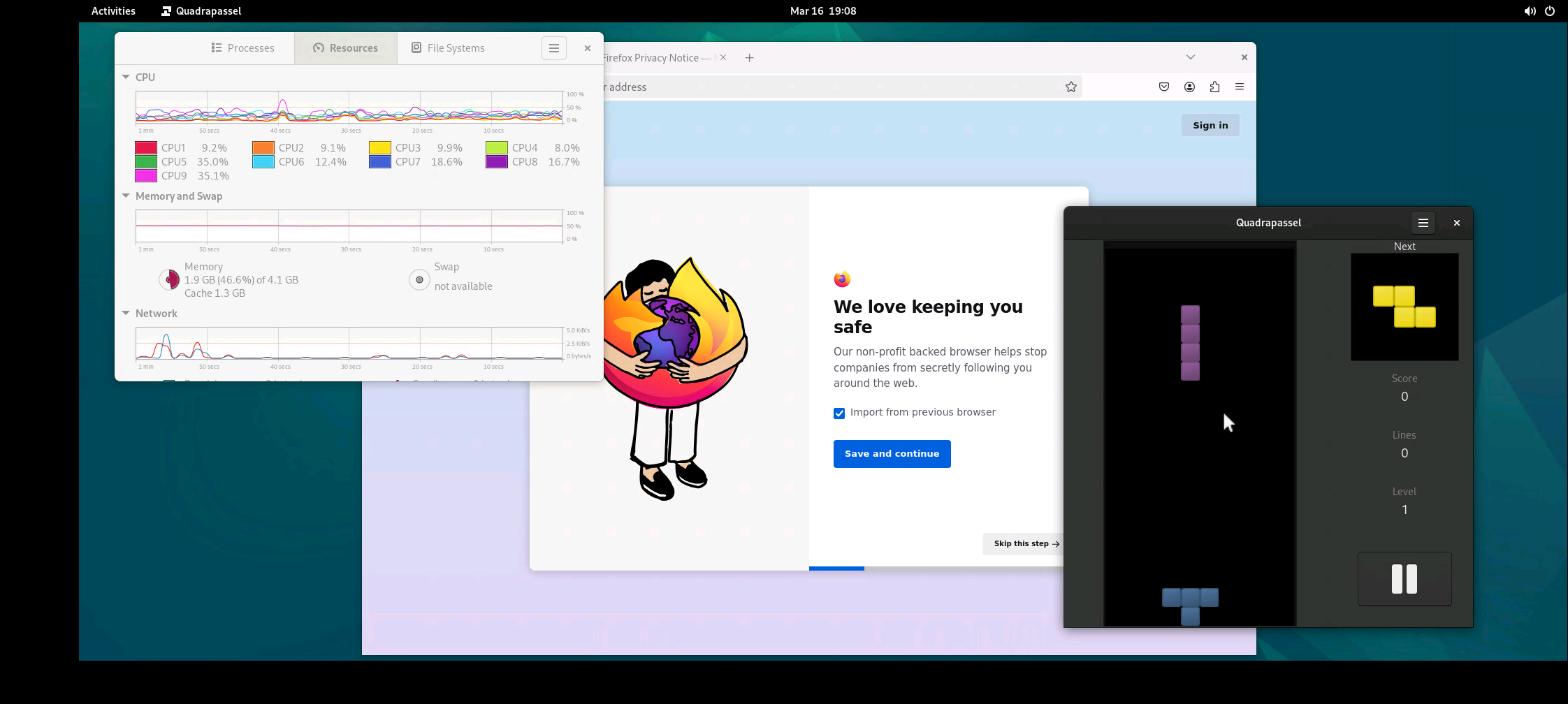Sir, every professional developer knows there’s never time and people to maintain the testing environment so testing is done in production! That testing environment you’re dreaming of is missed shareholder value.
Avid Amoeba
- 8 Posts
- 217 Comments
USB 3 should be plenty fast. Even 4-disks per port do 600MB/s. Get some USB-SATA adapters, or a multibay box, or some enclosures, and a USB hub. I was running 2 4-bay boxes on 2 USB 3 5Gb ports with 8-disk RAIDz2. Peaks at 1.3GB/s.

 1·1 month ago
1·1 month agoRight but think about it. Any ports open on the host are opened by processes running on the host. If a process on the host wants to open 443, the host OS would ask for root. Now think about the VM from the point of view of the host. It’s just another running process. If it tries to open 443 - it’s gotta have root or it will fail. It doesn’t matter what permissions the process inside the VM has. In fact the host doesn’t even know about that process. To the host, the VM process wants to open protected port.

 1·1 month ago
1·1 month agoI didn’t try because I assume I can’t. 😂 Cause that would require root on Android, or special capability.
E: Yeah it doesn’t seem to work.

 8·1 month ago
8·1 month agoJust tried, and yes you can.

 10·1 month ago
10·1 month agoDocker works as expected:


 3·1 month ago
3·1 month agoSure but according to the AnLinux project docs you can’t really run everything Debian can. For example it says it can’t run some DEs. For me this isn’t about whether Termux can do things a Debian VM can. I know it can. It’s about can Termux do everything a Debian VM can and as far as I know, it cannot.
And then there’s the work the Termux team has to do to get programs to work on Android. With a Debian VM, there’s no additional work needed. Whatever the Debian team packages would just work.

 3·1 month ago
3·1 month agoSure but this can do things that Termux can’t. E.g. running a desktop, Docker or whatever else a full Debian OS can run. Plus you can do tabs in Byobu or whatever.

 2·1 month ago
2·1 month agoIt’s part of AOSP so whoever ships Android probably could expose it to the user.

 4·1 month ago
4·1 month agoNo benchmarks. It works, not very fast in the guy but usable.

 13·1 month ago
13·1 month agoRDPing from Android into the VM after installing a desktop environment:


 1·1 month ago
1·1 month agoWhich feature?

 8·1 month ago
8·1 month agoIt’s a real VM, not a container. Chances are you can run containers on top of the VM. Haven’t tried.

 3·1 month ago
3·1 month agoFor things that don’t work on Termux. The only advantage of Termux is that it starts way faster and it consumes significantly less resources. Other than that, the VM would be superior. So if I had to connect via SSH to a machine, I’d probably use Termux.

 1·1 month ago
1·1 month agoIt appears to be running behind NAT but it’s already have an easy port forwarding feature where I was able to connect to a server running on the VM by connecting to localhost in Termux.

 3·1 month ago
3·1 month agoI’m on the standard Android 15 on 8 Pro. The shared storage is mounted at
/mnt/shared

 19·1 month ago
19·1 month agoSo I tried this just now, and it works. It looks pretty good at first glance. Proper Debian VM, can listen on ports, can access files under Downloads. It just takes 10-20 seconds to start and a few to stop.

 1·2 months ago
1·2 months agoRight so I guess the question of 3 is whether it means 3 backups or 3 copies. If we take it literally - 3 copies, then it does protect from user error only. If 3 backups, it protects against hardware failure too.
E: Seagate calls them copies and explicitly says the implementer can choose how the copies are distributed across the 2 media. The woodchipper scenario would be handled by the 2 media requirement.

 0·2 months ago
0·2 months agoHm I wonder why snapshots wouldn’t satisfy 3. Copies on the same disk like /file, /backup1/file, /backup2/file should satisfy 3. Why wouldn’t snapshots be equivalent if 3 doesn’t guard against filesystem or hardware failure? Just thinking and curious to see opinion.

I think the really useful idea here is solving the scaling issue by limiting the source sites to a known good set. 95% of the time I am not looking for results from unknown sites. In fact I actively work to get information from the sites I trust.